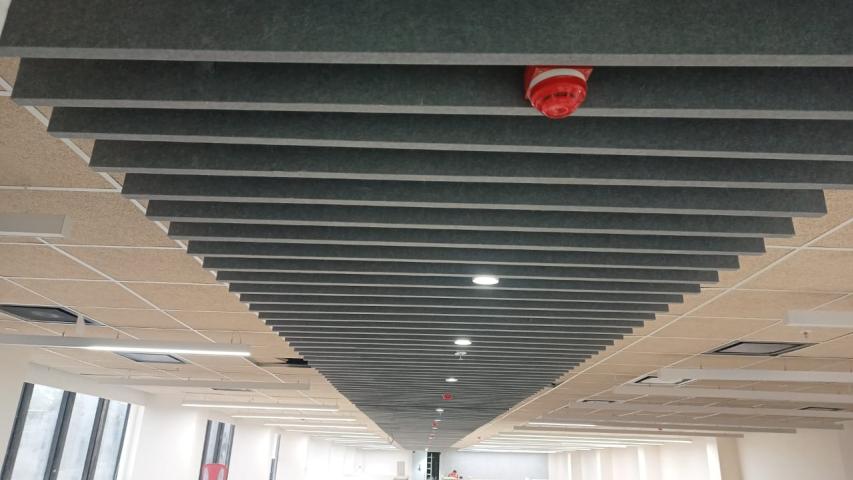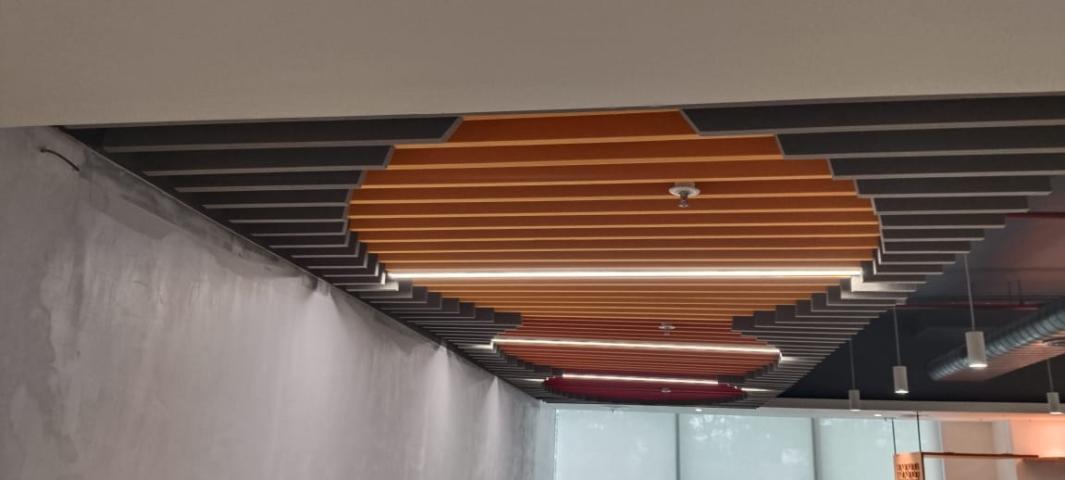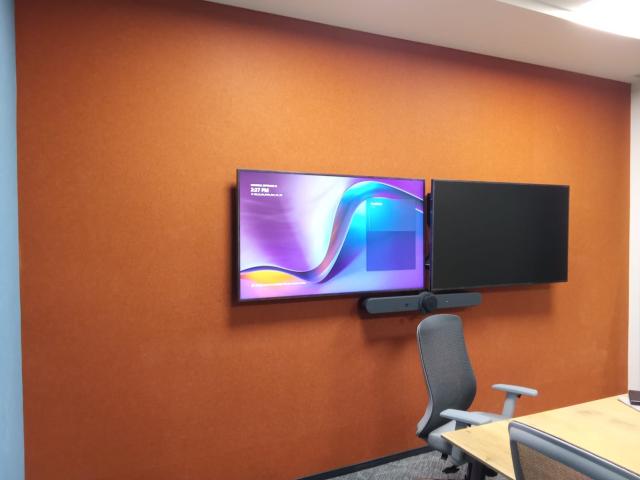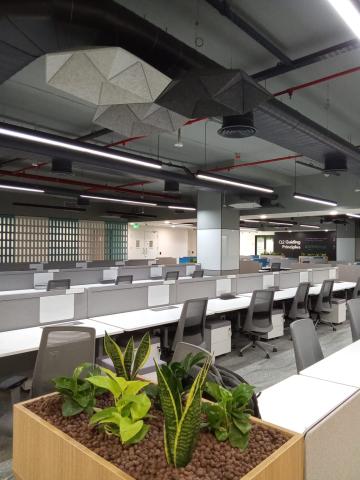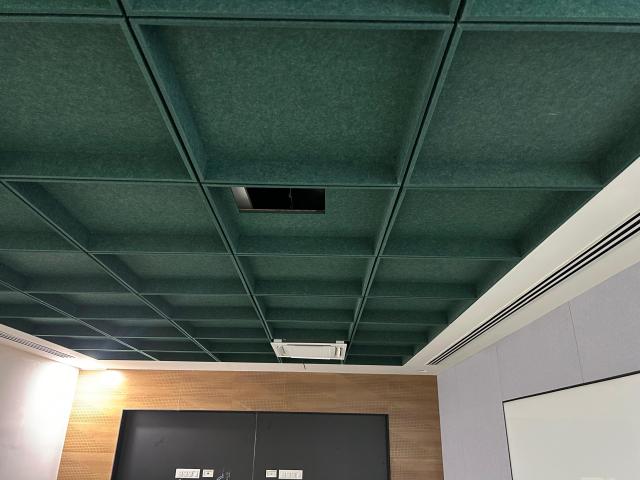When it comes to designing an office space that fosters productivity, creativity, and comfort, noise control is often a critical factor. Unwanted noise can distract employees, reduce concentration, and even lead to stress. In this case study, we will explore how a mid-sized tech company revamped its office environment by installing acoustic board panels to address noise issues while enhancing the aesthetics of their space.
The Challenge: Noise in an Open Office Layout
The company was facing a common problem: excessive noise in its open office layout. With teams collaborating on various projects simultaneously, phone calls being made, and discussions happening across desks, the noise levels had started to affect employee productivity. The open design, while encouraging teamwork, amplified sounds, creating a distracting environment for employees who needed quiet for focused tasks.
In addition to this, the company was preparing to expand, meaning more employees and an increased potential for noise. The management team knew they needed to make a change, but they didn’t want to compromise on the collaborative benefits of an open office. They decided to look for solutions that could maintain the open layout but minimize noise distractions.
Reasons to choose Acoustic Board Panels?
After exploring several options, the company’s design team recommended acoustic board panels as a solution. These panels are designed specifically to absorb sound, reducing noise levels in a space without the need for major structural changes. They also come in various >
The notable advantages of acoustic board panels that appealed to the company included:
Noise Reduction: The primary reason for choosing acoustic solutions was their ability to absorb and reduce sound, creating a quieter environment.
Aesthetic Appeal: Unlike some noise control solutions, acoustic board panels can be customized to match the interior design, adding to the office’s aesthetic appeal.
Sustainability: Many acoustic panels are made from eco-friendly materials, aligning with the company’s commitment to sustainability.
Easy Installation: Installing acoustic board panels is relatively simple, which meant minimal disruption to daily operations during the office redesign.
The Transformation Process
Once the decision was made, the company partnered with us as we are specialized in transfoming workspace environments and had experience with acoustic solutions. The design team conducted a thorough analysis of the space, identifying key areas where noise levels were highest. These included:
Collaborative zones where employees often held impromptu discussions.
Conference rooms where sound frequently leaked, disrupting adjacent work areas.
The kitchen and lounge areas, where employees gathered for breaks.
Based on this analysis, the team recommended the installation of acoustic board panels in the following areas:
Ceiling Panels: Suspended ceiling panels were installed in the collaborative zones. These panels helped absorb sound from conversations and reduced the echo effect commonly found in large open spaces.
Wall Panels: In the conference rooms, acoustic board panels were installed on the walls to prevent sound from escaping and disturbing nearby employees. These panels were also designed to double as visual elements, featuring company branding and creative patterns.
Partitions: Acoustic partitions were used to section off the kitchen and lounge areas without fully isolating them. These partitions provided a buffer between the noisy break areas and the quieter workstations.
The design firm used materials that were not only highly effective at sound absorption but also environmentally friendly. Many of the acoustic board panels installed were made from recycled fibers, adding to the company’s sustainability goals.
Results: A Dramatically Improved Work Environment
The installation of acoustic board panels had an immediate and noticeable impact on the office environment. Employees reported a significant reduction in noise levels, especially in high-traffic areas like the collaborative zones and break areas. The conference rooms became more functional, with improved sound isolation allowing meetings to take place without disrupting others in the office.
Key outcomes from the transformation included:
Improved Focus and Productivity: With less background noise, employees found it easier to focus on their tasks, especially in areas designated for individual work.
Enhanced Collaboration: The quieter environment allowed teams to hold discussions without worrying about disturbing others. This fostered better communication and collaboration, especially during brainstorming sessions.
Aesthetic Upgrade: The customized acoustic board panels added to the overall design of the office. The company received positive feedback from both employees and visitors, who appreciated the modern, stylish look of the panels.
Sustainability Goals Met: By choosing eco-friendly acoustic board panels, the company aligned its office redesign with its broader sustainability objectives, contributing to a healthier planet while improving its workspace.
Long-Term Principal gains of Acoustic Board Panels
The long-term benefits of installing acoustic board panels go beyond just noise reduction. By creating a more comfortable and functional work environment, the company saw a positive impact on employee well-being and satisfaction. Fewer distractions meant employees could focus better, leading to increased efficiency. The office also became a more inviting space for clients and partners to visit, enhancing the company’s professional image.
Additionally, acoustic board panels are a low-maintenance solution, making them cost-effective in the long run. Unlike some noise control methods that require regular upkeep, the panels maintained their effectiveness and aesthetic appeal over time without the need for frequent replacements.
Lessons Learned and Best Practices
This case study demonstrates that acoustic board panels can be an effective and stylish acoustic solution for controlling noise in an open office layout. Some key lessons and best practices from the project include:
Thorough Space Analysis: Before installing any acoustic solutions, it’s important to analyze the space carefully to identify the areas where noise is most problematic.
Customization: Choose acoustic board panels that not only serve their functional purpose but also enhance the visual appeal of the space. Customization options like colors, shapes, and patterns can make the panels a design feature in their own right.
Sustainability: Opt for eco-friendly materials whenever possible to align with sustainability goals. This adds value to the project beyond just noise control.
Conclusion
Transforming an office space with acoustic board panels proved to be a successful solution for the company in this case study. The result was a quieter, more productive work environment that didn’t sacrifice the benefits of an open office layout. For companies facing similar noise challenges, acoustic board panels offer an effective, flexible, and aesthetically pleasing solution that can make a significant difference in the overall work experience

